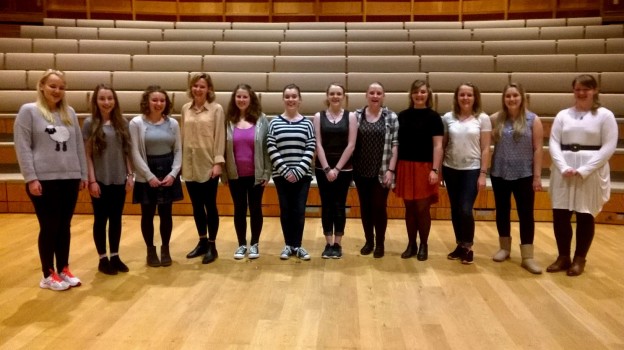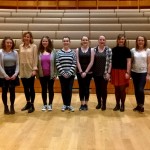Continuing our series introducing choral singers at Kent; this week, first-year soprano with Minerva Voices, Cecilian Choir and Chorus, reading Wildlife Conservation, Alice Baker.
How did you get into choral singing ?
When I was younger my parents took me to our local church (St. Matthew’s, Redhill) and I can remember always staring at the choir as they paraded through the church at the beginning of every service. By the time I was nine, I was already involved in choirs my primary school organised and was certain that I would be good enough for the church one! Thankfully, the Choir Master and Vicar agreed and in 2006 I joined their SATB choir as their youngest ever member. Very soon after this I went to my Secondary School and instantly joined their Yr.7 choir and progressed up the school, joining choirs wherever I could. Eventually I joined the school’s Senior Choir where I had some of my best singing experiences.
What’s your favourite piece ?
 This is such a difficult question to answer! I have sung so many pieces in a variety of styles, both in choirs and as a solo performer, that choosing one is no easy task… I think my favourite choral piece has got to be ‘And The Glory Of The Lord’ from Handel’s Messiah because it is so much fun to listen to as well as sing, although it’s no easy task!
This is such a difficult question to answer! I have sung so many pieces in a variety of styles, both in choirs and as a solo performer, that choosing one is no easy task… I think my favourite choral piece has got to be ‘And The Glory Of The Lord’ from Handel’s Messiah because it is so much fun to listen to as well as sing, although it’s no easy task!
That being said, I do also love How Beautiful Upon The Mountains by John Stainer. This was a real favourite at my church and I love the joyful yet haunting qualities of it, created by the harmonies between all four voice parts and the delicate accompaniment.
What’s your best/worst memory about singing in a choir ?
My best memory is a bit of a tie… When I was presented with my Dean’s Bronze Award medal I had the honour of singing at St Paul’s Cathedral in London. It is an iconic building and singing in there was really special. My other best memory is being told that I had been chosen to sing the Once In Royal David’s City first verse solo for our church’s Nine Lessons and Carols service. This is one of the most popular services of the year and when I heard my voice ring out through the knave I think it was the first time I thought to myself: ‘Wow… That actually sounds pretty good’!
I’d like to think that I don’t have a worst memory but after some thought, a pretty nightmare-ish one came to mind. Our choir had organised a concert to raise money for a new set of robes and the day before the performance, I lost my voice. Every singers’ worst fear! (I think I am already gaining a reputation in Minerva Voices for losing the ability to talk every time I get even the slightest cold!) So I spent the day before the concert not making a sound, didn’t sing during the final rehearsal, and only practiced my solo once. When the performance arrived my silence had, thankfully, paid off and I was able to sing every piece to a decent standard. But I can honestly say I have never been so nervous for a solo before and probably won’t be again!
What do you find the most inspirational aspect of choral singing ?
I think the music itself is the key component to capturing and inspiring an audience. And I feel the only way to do this is if the music has already captured and inspired the choir who will be performing it. At the end of the day, it doesn’t matter whether the people watching came in liking that style of music, if the choir show they enjoy it and performed it well, then the audience should walk away with a new-found respect for whatever was presented. I think this inspires anyone watching and listening to keep an open mind, and it will help them seize opportunities to try new musical experiences in the future. This to me is a choir’s purpose, to bring music to the masses and show them something new and exciting.
Follow Alice on Twitter @AlViBa18

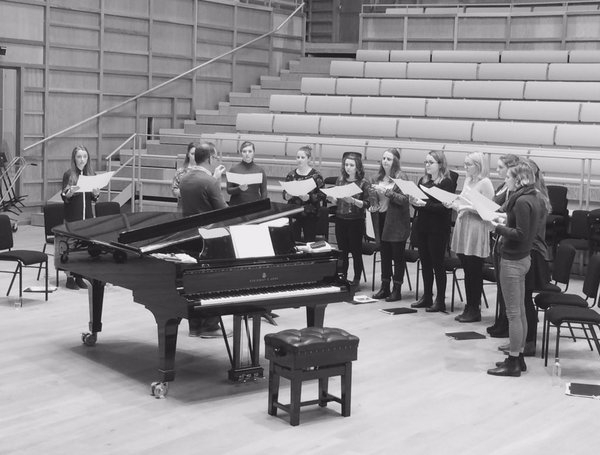 Saturday therefore allowed us to immerse ourselves in the repertoire for our looming performances, and showed us aspects of the programme that hadn’t been apparent before. A long look at Tartini’s Stabat Mater, for instance, ended with the Choir singing the whole piece through for the first time, and we discovered the piece has an emotional scale and drama far outweighing the scope of its slight appearance on the page. Moving between radiant, three-voice colours and the stark simplicity of plainsong in its setting of the agonising text reflecting on Christ’s Mother weeping at the foot of the Cross, and a yearning to share in Christ’s passion, the music demands sustained concentration in order to bring out the tone of the text as it unfolds.
Saturday therefore allowed us to immerse ourselves in the repertoire for our looming performances, and showed us aspects of the programme that hadn’t been apparent before. A long look at Tartini’s Stabat Mater, for instance, ended with the Choir singing the whole piece through for the first time, and we discovered the piece has an emotional scale and drama far outweighing the scope of its slight appearance on the page. Moving between radiant, three-voice colours and the stark simplicity of plainsong in its setting of the agonising text reflecting on Christ’s Mother weeping at the foot of the Cross, and a yearning to share in Christ’s passion, the music demands sustained concentration in order to bring out the tone of the text as it unfolds.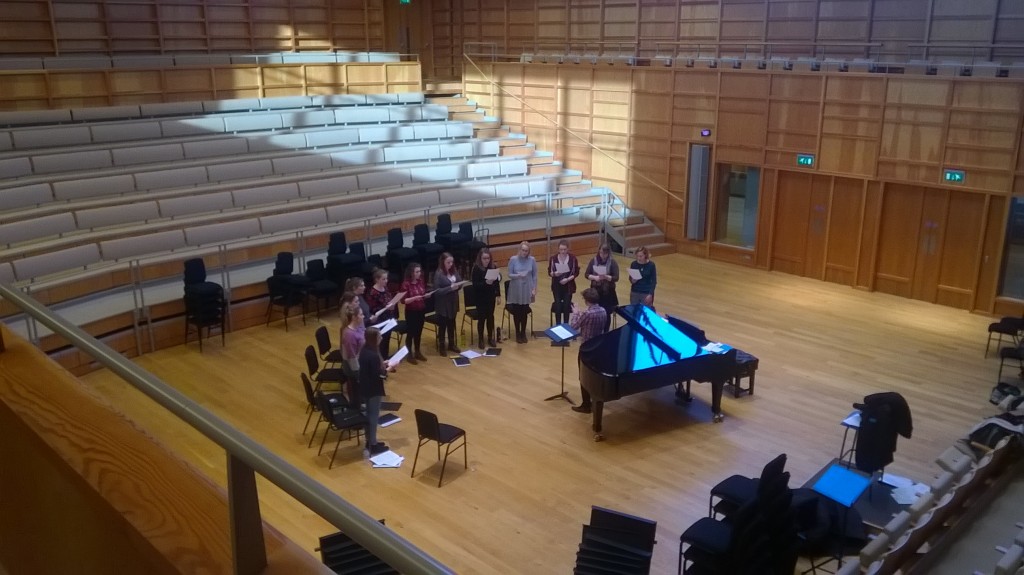
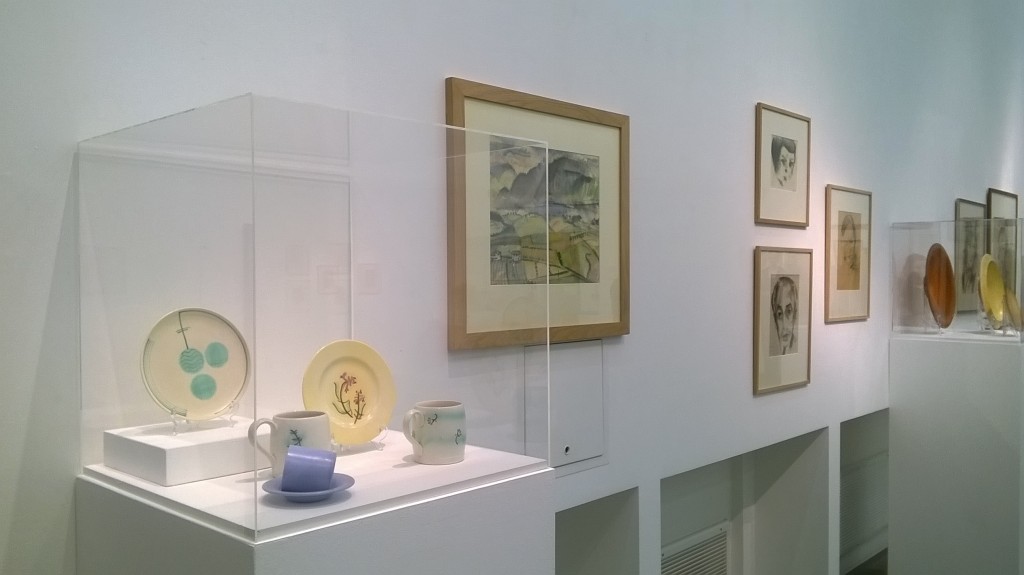 Mid-way through the afternoon, we decamped to Studio 3 Gallery, the venue for our first concert on
Mid-way through the afternoon, we decamped to Studio 3 Gallery, the venue for our first concert on 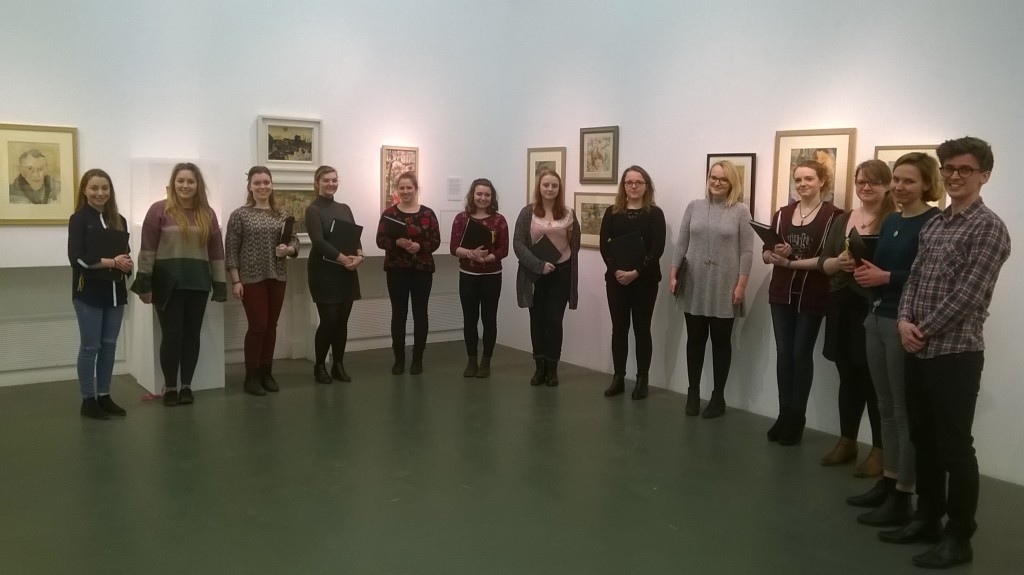
 It was a remarkable moment.
It was a remarkable moment. All in all, then, a good day’s work. And first-year Alice S’s cake-making skills were in evidence yet again – there was some pressure to live up to the excellence of her contribution to lunch after the success of her effort last term, and it seems she didn’t disappoint this time around either. We pick up again tomorrow night, in a steady build-up into both concerts this month, and at last the pieces are starting to bloom. Come and here them for yourselves…
All in all, then, a good day’s work. And first-year Alice S’s cake-making skills were in evidence yet again – there was some pressure to live up to the excellence of her contribution to lunch after the success of her effort last term, and it seems she didn’t disappoint this time around either. We pick up again tomorrow night, in a steady build-up into both concerts this month, and at last the pieces are starting to bloom. Come and here them for yourselves…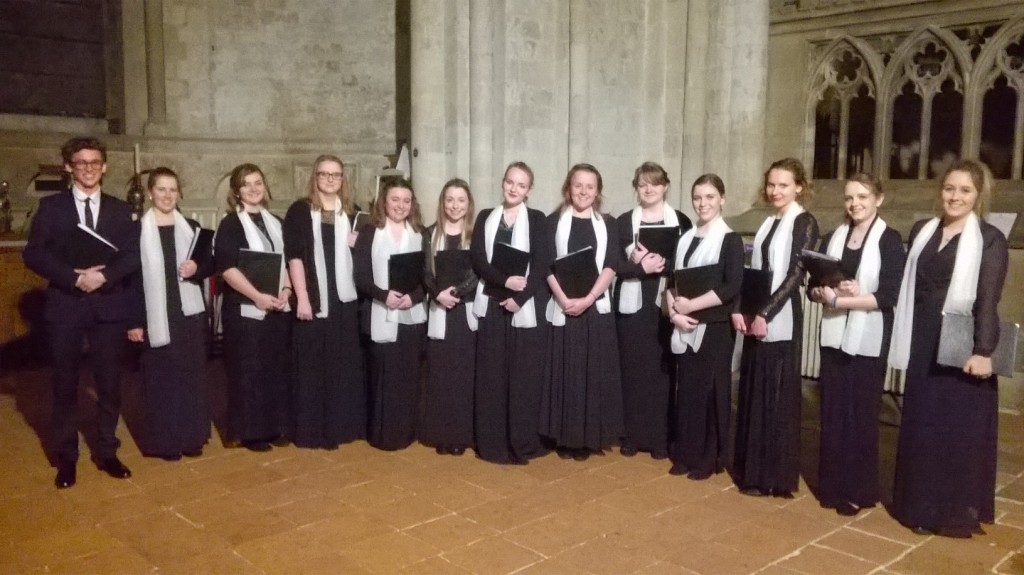
 Last night’s service, always a high-point of Kent’s cultural calendar, saw over a thousand people packing out Canterbury Cathedral, including the members of Minerva Voices, who performed several solo pieces as well as leading some ringing descants in the congregational hymns (which involved some serious planning over dinner betwtixt rehearsal and concert). The choir arrived in the Nave yesterday afternoon, to rehearse its repertoire, as well as to practice processing from the West Door down to the steps before the rood screen, and to get accustomed to singing in such a magnificent venue. Standing at the end of the Nave, you suddenly realise the volume of vaulted space that the Choir needs to fill with sound.
Last night’s service, always a high-point of Kent’s cultural calendar, saw over a thousand people packing out Canterbury Cathedral, including the members of Minerva Voices, who performed several solo pieces as well as leading some ringing descants in the congregational hymns (which involved some serious planning over dinner betwtixt rehearsal and concert). The choir arrived in the Nave yesterday afternoon, to rehearse its repertoire, as well as to practice processing from the West Door down to the steps before the rood screen, and to get accustomed to singing in such a magnificent venue. Standing at the end of the Nave, you suddenly realise the volume of vaulted space that the Choir needs to fill with sound.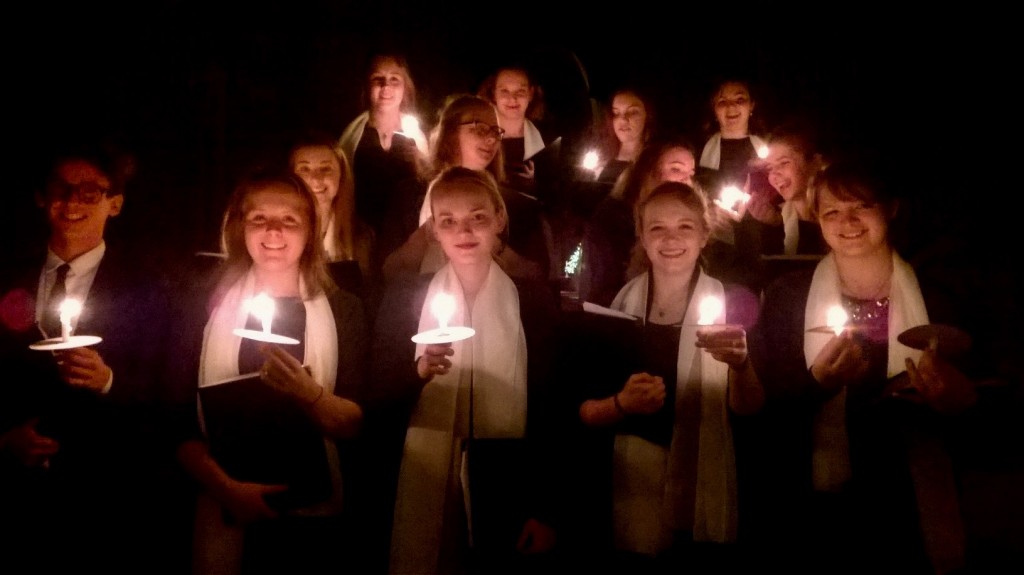 The service closes with a candlelit communal performance of Hark the Herald Angels Sing, and as the congregation departed, bearing their lit candles out into the night and into the mist-strewn city streets, you felt the reach of Christmas go with them. It’s a wonderful occasion, with so many of the University community coming together to hear anew the message of the season in words and music, to reflect on the tidings of the moment and to reach out to others. Now that really is the meaning of Christmas.
The service closes with a candlelit communal performance of Hark the Herald Angels Sing, and as the congregation departed, bearing their lit candles out into the night and into the mist-strewn city streets, you felt the reach of Christmas go with them. It’s a wonderful occasion, with so many of the University community coming together to hear anew the message of the season in words and music, to reflect on the tidings of the moment and to reach out to others. Now that really is the meaning of Christmas.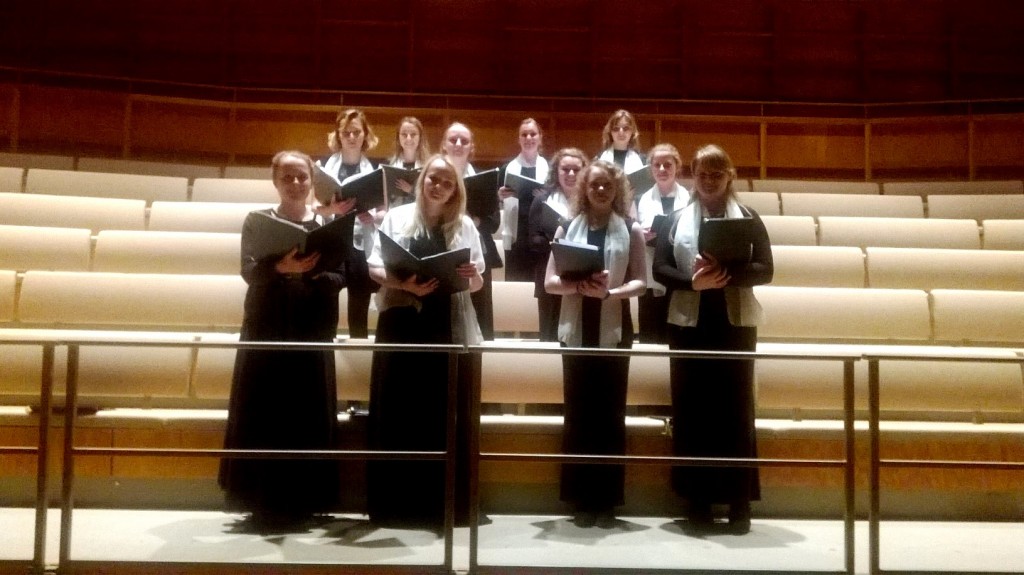
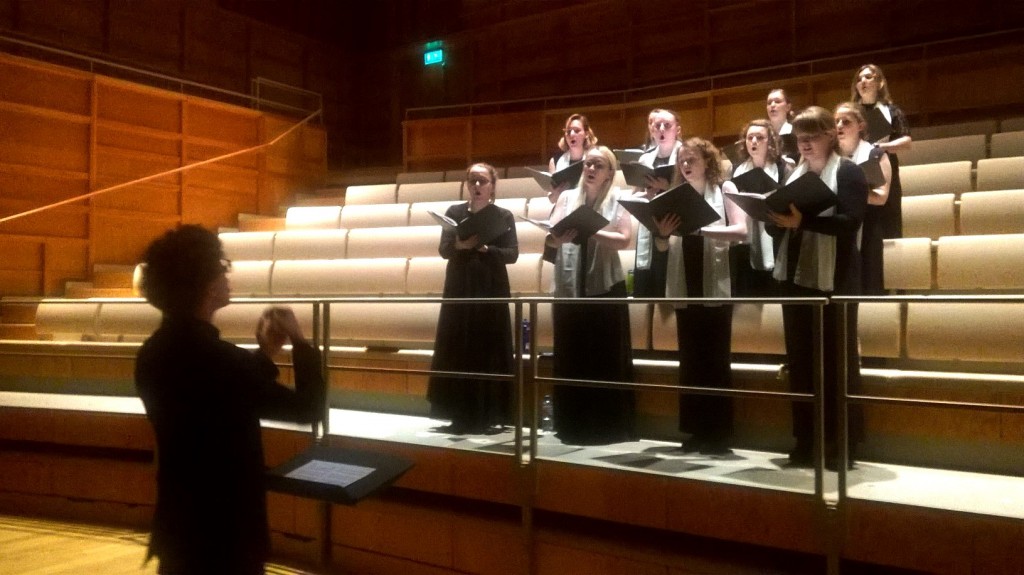
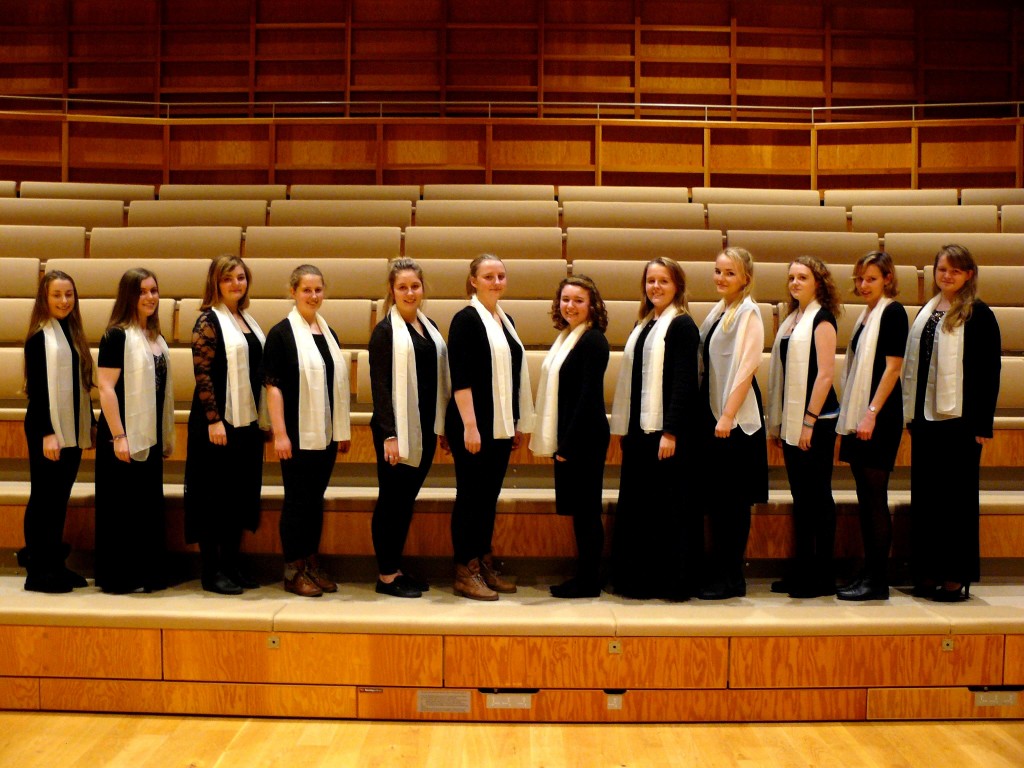 And all the weeks of nagging – by both myself and this year’s assistant conductor, Joe – finally began to yield results last night. The ensemble sound was more confident, the choir was beginning to find its feet and start to perform, rather than simply singing through the repertoire.
And all the weeks of nagging – by both myself and this year’s assistant conductor, Joe – finally began to yield results last night. The ensemble sound was more confident, the choir was beginning to find its feet and start to perform, rather than simply singing through the repertoire.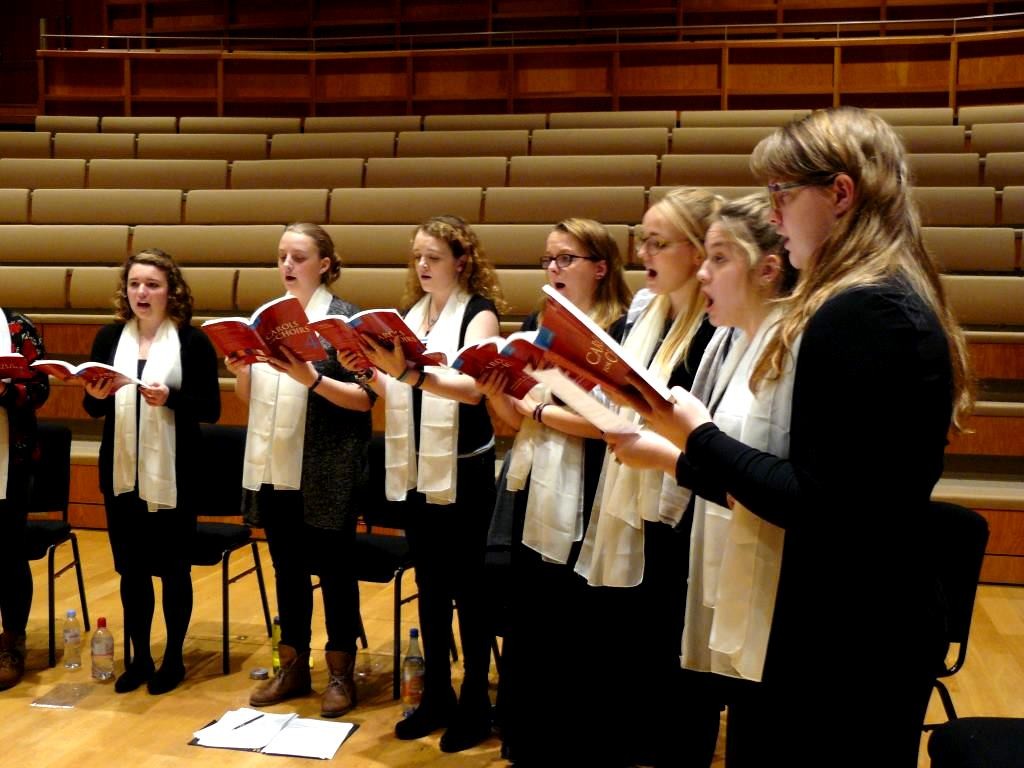 The other aspect to last night’s rehearsal was a first try-out of the choir’s concert outfits, to see if the colour and co-ordinating will work. This year, we’ve gone for the simple but stark contrast of black and cream, and last night we sang for most of the session in concert-dress; and it does make a difference. Not only do you need to sound like a choir, you need to feel like one; to stand and deliver in a manner that tells the audience that you know what you are doing, and that wins the listener’s trust even before you have sung a note. Standing like a choir last night also helped them sing like one too.
The other aspect to last night’s rehearsal was a first try-out of the choir’s concert outfits, to see if the colour and co-ordinating will work. This year, we’ve gone for the simple but stark contrast of black and cream, and last night we sang for most of the session in concert-dress; and it does make a difference. Not only do you need to sound like a choir, you need to feel like one; to stand and deliver in a manner that tells the audience that you know what you are doing, and that wins the listener’s trust even before you have sung a note. Standing like a choir last night also helped them sing like one too.
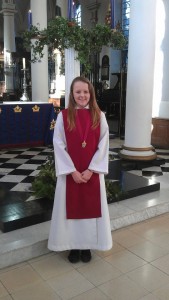 What’s your favourite piece ?
What’s your favourite piece ?